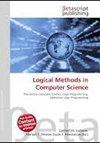简单模型的空间逻辑
IF 1
4区 数学
Q4 COMPUTER SCIENCE, THEORY & METHODS
引用次数: 1
摘要
集体适应系统通常由许多异质组件组成,通常以组的形式组织。这些实体通过调整自己的行为来追求个人或集体目标,从而相互作用。在这些系统中,这些实体的分布决定了一个空间可以是物理的,也可以是逻辑的。前者是根据组件之间的物理关系来定义的。后者取决于逻辑关系,例如属于同一组。在这种情况下,空间属性的规范和验证在支持系统设计和预测其行为方面起着基本作用。出于这个原因,人们提出了不同的工具和技术来指定和验证空间的性质,主要描述为图。因此,这些方法通常使用模型空间关系来描述实体对之间的接近形式。不幸的是,这些基于图的模型不允许考虑两个以上实体之间的关系,当人们对通过涉及实体组之间的相互作用来描述空间方面感兴趣时,可能会出现这种关系。在这项工作中,我们提出了一个简单复合体的空间逻辑解释。这些是拓扑对象,能够有效地表示具有高阶边的图形的表面和体积。我们讨论了如何用一种与简单、复杂和逻辑公式的维数成线性关系的正确、完备的模型检验算法来验证逻辑公式的满足性。根据在简单复合体上定义的经典双模拟和分支双模拟关系的空间变异,研究了所提出逻辑的可表达性。本文章由计算机程序翻译,如有差异,请以英文原文为准。
A Spatial Logic for Simplicial Models
Collective Adaptive Systems often consist of many heterogeneous components
typically organised in groups. These entities interact with each other by
adapting their behaviour to pursue individual or collective goals. In these
systems, the distribution of these entities determines a space that can be
either physical or logical. The former is defined in terms of a physical
relation among components. The latter depends on logical relations, such as
being part of the same group. In this context, specification and verification
of spatial properties play a fundamental role in supporting the design of
systems and predicting their behaviour. For this reason, different tools and
techniques have been proposed to specify and verify the properties of space,
mainly described as graphs. Therefore, the approaches generally use model
spatial relations to describe a form of proximity among pairs of entities.
Unfortunately, these graph-based models do not permit considering relations
among more than two entities that may arise when one is interested in
describing aspects of space by involving interactions among groups of entities.
In this work, we propose a spatial logic interpreted on simplicial complexes.
These are topological objects, able to represent surfaces and volumes
efficiently that generalise graphs with higher-order edges. We discuss how the
satisfaction of logical formulas can be verified by a correct and complete
model checking algorithm, which is linear to the dimension of the simplicial
complex and logical formula. The expressiveness of the proposed logic is
studied in terms of the spatial variants of classical bisimulation and
branching bisimulation relations defined over simplicial complexes.
求助全文
通过发布文献求助,成功后即可免费获取论文全文。
去求助
来源期刊

Logical Methods in Computer Science
工程技术-计算机:理论方法
CiteScore
1.80
自引率
0.00%
发文量
105
审稿时长
6-12 weeks
期刊介绍:
Logical Methods in Computer Science is a fully refereed, open access, free, electronic journal. It welcomes papers on theoretical and practical areas in computer science involving logical methods, taken in a broad sense; some particular areas within its scope are listed below. Papers are refereed in the traditional way, with two or more referees per paper. Copyright is retained by the author.
Topics of Logical Methods in Computer Science:
Algebraic methods
Automata and logic
Automated deduction
Categorical models and logic
Coalgebraic methods
Computability and Logic
Computer-aided verification
Concurrency theory
Constraint programming
Cyber-physical systems
Database theory
Defeasible reasoning
Domain theory
Emerging topics: Computational systems in biology
Emerging topics: Quantum computation and logic
Finite model theory
Formalized mathematics
Functional programming and lambda calculus
Inductive logic and learning
Interactive proof checking
Logic and algorithms
Logic and complexity
Logic and games
Logic and probability
Logic for knowledge representation
Logic programming
Logics of programs
Modal and temporal logics
Program analysis and type checking
Program development and specification
Proof complexity
Real time and hybrid systems
Reasoning about actions and planning
Satisfiability
Security
Semantics of programming languages
Term rewriting and equational logic
Type theory and constructive mathematics.
 求助内容:
求助内容: 应助结果提醒方式:
应助结果提醒方式:


